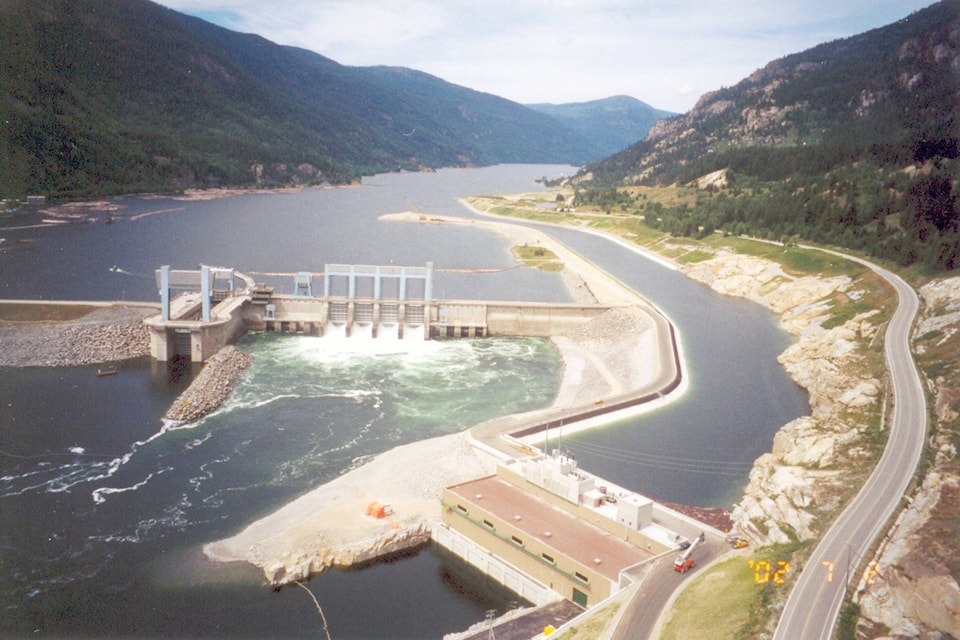SKYE CUNNINGHAM
Arrow Lakes News
The Columbia River Treaty public meeting in Nakusp heard many concerns about upcoming treaty negotiations with the U.S.
The Treaty Review team have hosted a series of public meetings over the last two weeks in communities all over B.C. affected by the Treaty.
Nakusp was the last location of nine that Kathy Eichenberger, the executive director of the Columbia River Treaty Review, and Steve Gluck from Global Affairs Canada visited and they said they were both impressed with the turnout Nakusp residents showed.
“Every single community meeting people were focused and had really intensive conversations,” said Eichenberger.
About 60 Nakusp and area residents attended the session at the Nakusp Community Complex.
Questions for Eichenberger and Gluck during the June 21 meeting varied from “Who controls the tap?” to “What is the biggest bone of contention between Canada and the U.S.?”
Residents voiced how upset they are that the Arrow Lake water level varies so much year-to-year and that on an annual cycle, tourism, the economy and the ecosystem around the Arrow Lake are negatively affected by the low water level.
“We cannot be forced into an agreement that we don’t want to be a part of,” said Eichenberger.
The Treaty Review team said in their presentation about the points of interest for Nakusp that this area has been the most impacted and the least compensated. They are looking to make a change.
The Nakusp area was hit the hardest, there is “no doubt, no argument,” said Eichenberger.
This meeting had the most “perseverance,” out of the series.
Some of the recommendations the review team heard at the meeting were: “better clean-up of debris from the lake, make the reservoir be as close as possible to a natural system, include accommodation for white sturgeon, return of salmon, re-vegetation improves wetlands, set the recreation water level to 1440 ft, better communication to the community when there is an upcoming extreme water level and install a fixed link on the north end of the Arrow Lakes ferry location.”
In terms of how much water the U.S. receives, there were concerns about the U.S. reaping more benefits from the Treaty than Canada.
“We are very well aware that the U.S. benefits enormously from this Treaty,” said Gluck.
The review team stressed that the CRT is for the purpose of shaping and modelling how and when the water flows.
The CRT was signed in 1961 and ratified in 1964. Either Canada or the United States can unilaterally terminate the Treaty any time after 16 September 2024, provided written notice is filed at least 10 years in advance.
The Treaty, created to provide flood control and maximize power in the U.S. - affects the operations of three dams in the Columbia Basin - Mica, Duncan and Hugh Keenleyside.
“The original objective of the Treaty was the creation and sharing of benefits equitably between the two countries,” said Gluck.
The Treaty Review team have been gathering feedback from communities since 2011, and now they are seriously looking into what residents want.
Though the Treaty has no end date, the current flood control provision expires in 2024, moving to a more ad hoc “called upon” arrangement. Flood control is one of the issues to be negotiated with the U.S., as both countries seek a modernized Treaty.
The B.C. government recognizes the first time the Treaty was signed, community residents, as well as First Nations Peoples were not consulted.
These public meetings opened the discussion about what terms of the Treaty Basin citizens want to see negotiated.
